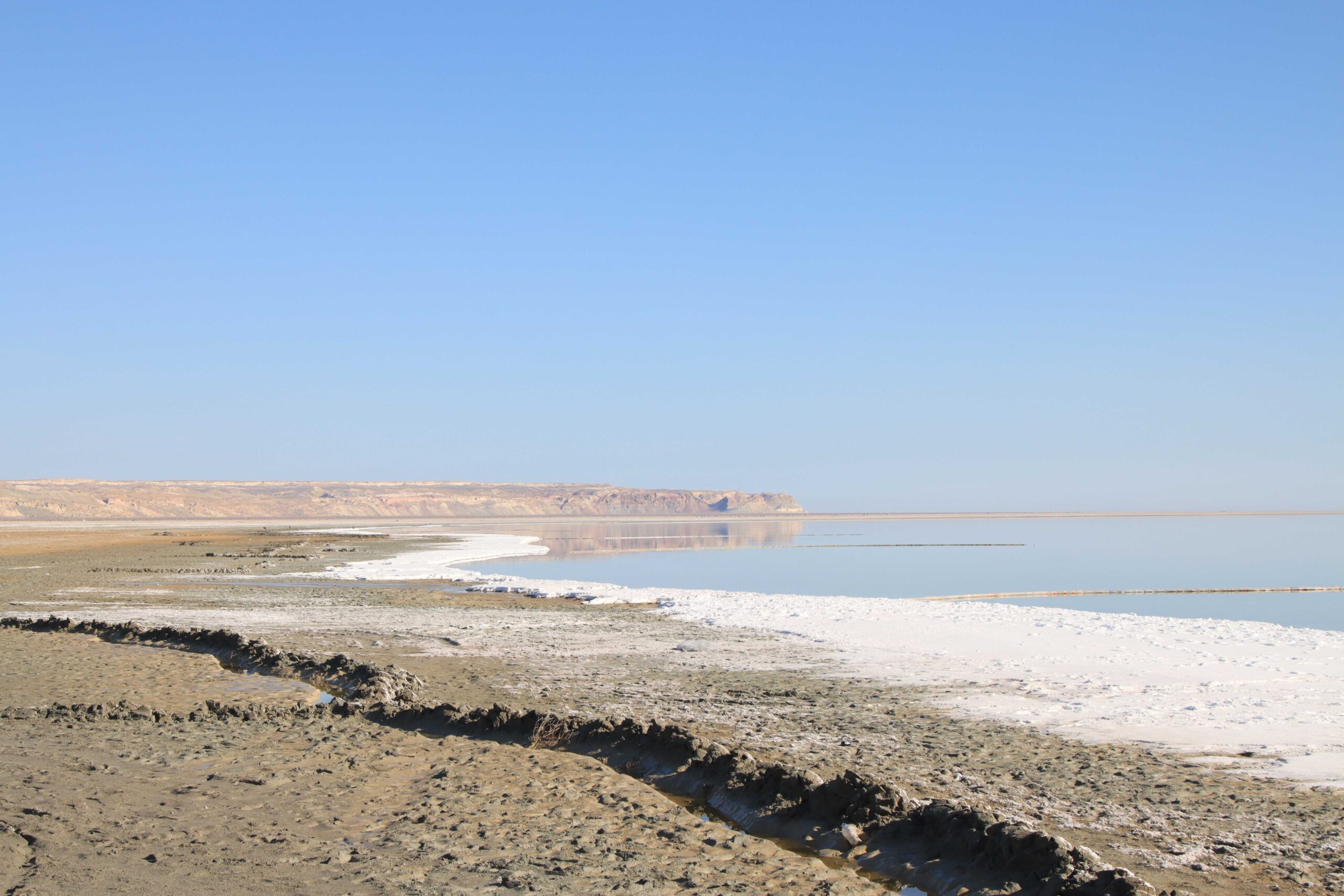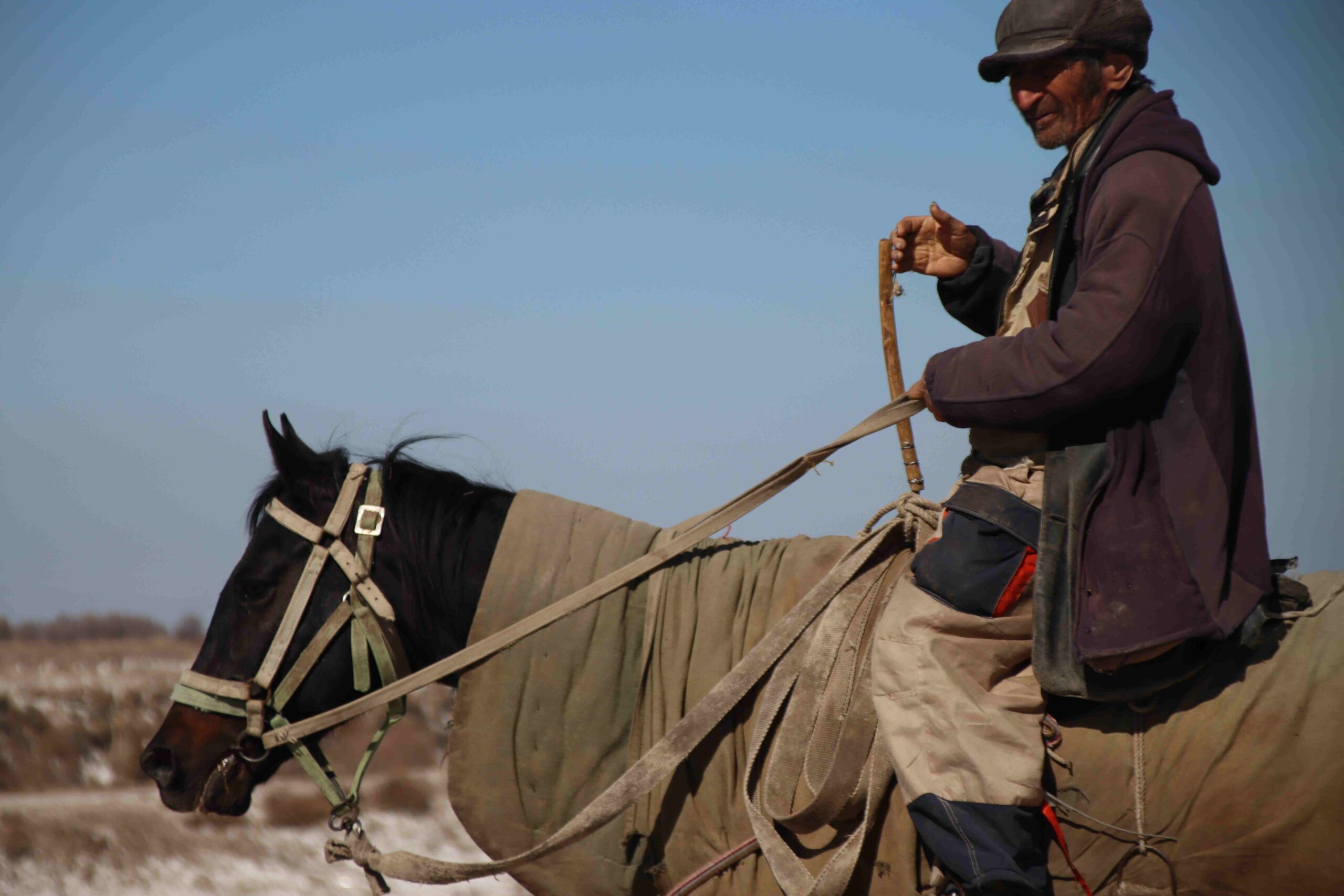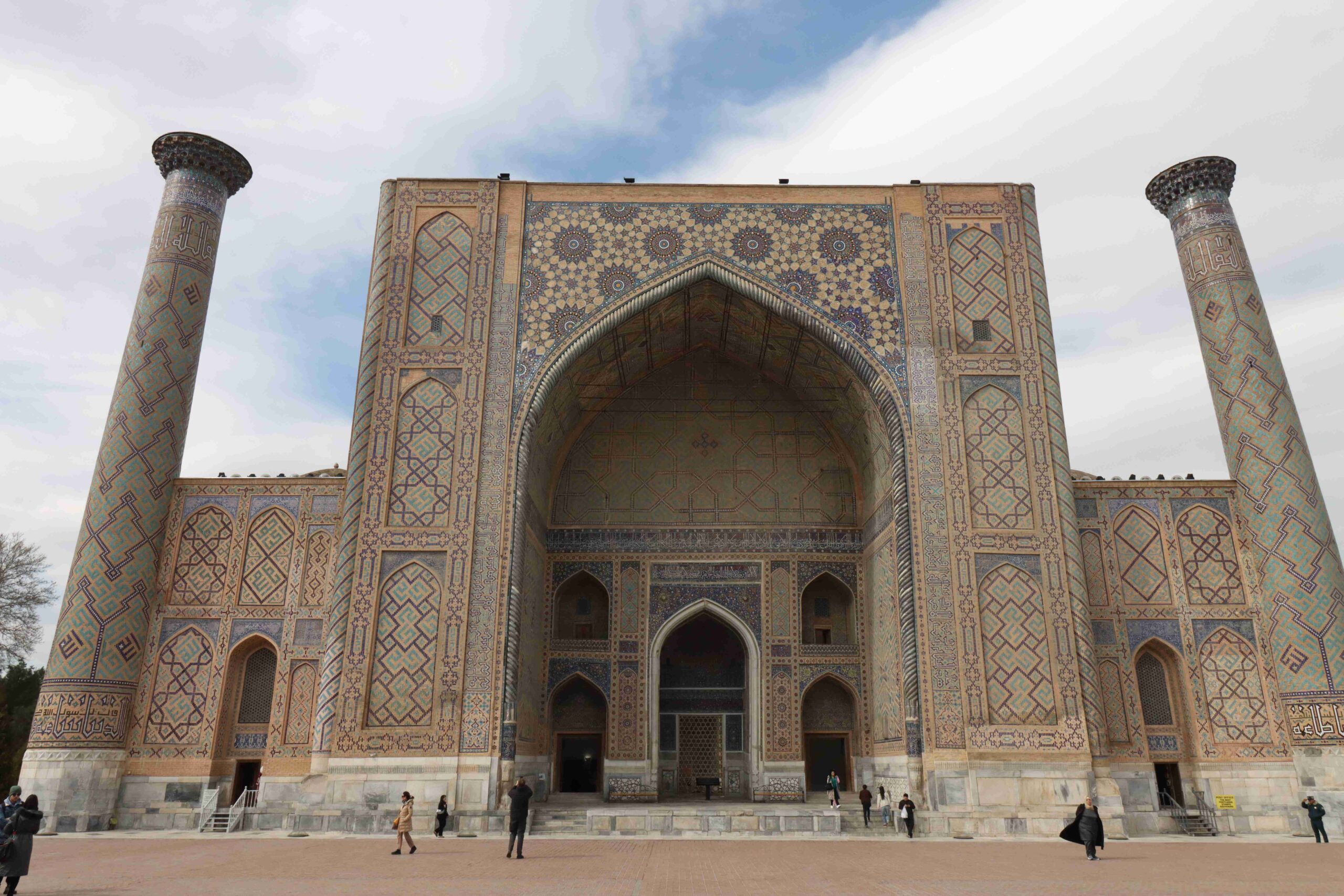It was as a dissatisfied and corralled tourist that I laid eyes upon the Aral Sea remnant for the first time, as a 1-day-old moon rose in a terracotta blaze over the salty, hazy, apocalyptic water body isolated in a semi-toxic desert. Once the world’s fourth (or third, sources argue) largest inland water body, the Soviets shrunk it to a puddle by comparison over a 30 or so year effort to make Uzbekistan the center of socialist cotton production. Irrigating the thirsty crop devastated the rivers that fed what is technically a lake rather than a sea, until the only thing that can live in it are tiny brine shrimp.
The effect of this was extraordinary. A sort of eco-Holocaust, it demonstrated how ecosystem collapse can lead to cascading problems that are difficult to predict at baseline. In the case of the Aral Sea, when the waters receded, toxic gases kept in situ by the seafloor were released and poisoned the surrounding human population. Thin wading pools of water left behind evaporated in the hot sun, leaving piles of caustic salt behind that rode on the desert winds for hundreds of miles before landing on unsuspecting farmers’ fields, poisoning the ground. The seabed turned into sand which mixed with the salt and suffocated local riverine foliage. Wildlife populations, of course, completely collapsed as a once moist environment full of small lakes and ponds lined with reeds became arid and inhospitable. Winds sweeping down from Siberia used to be kept in check by the local weather systems, moistened by the water bodies, but for years after the disaster they routinely battered the communities living in the region.
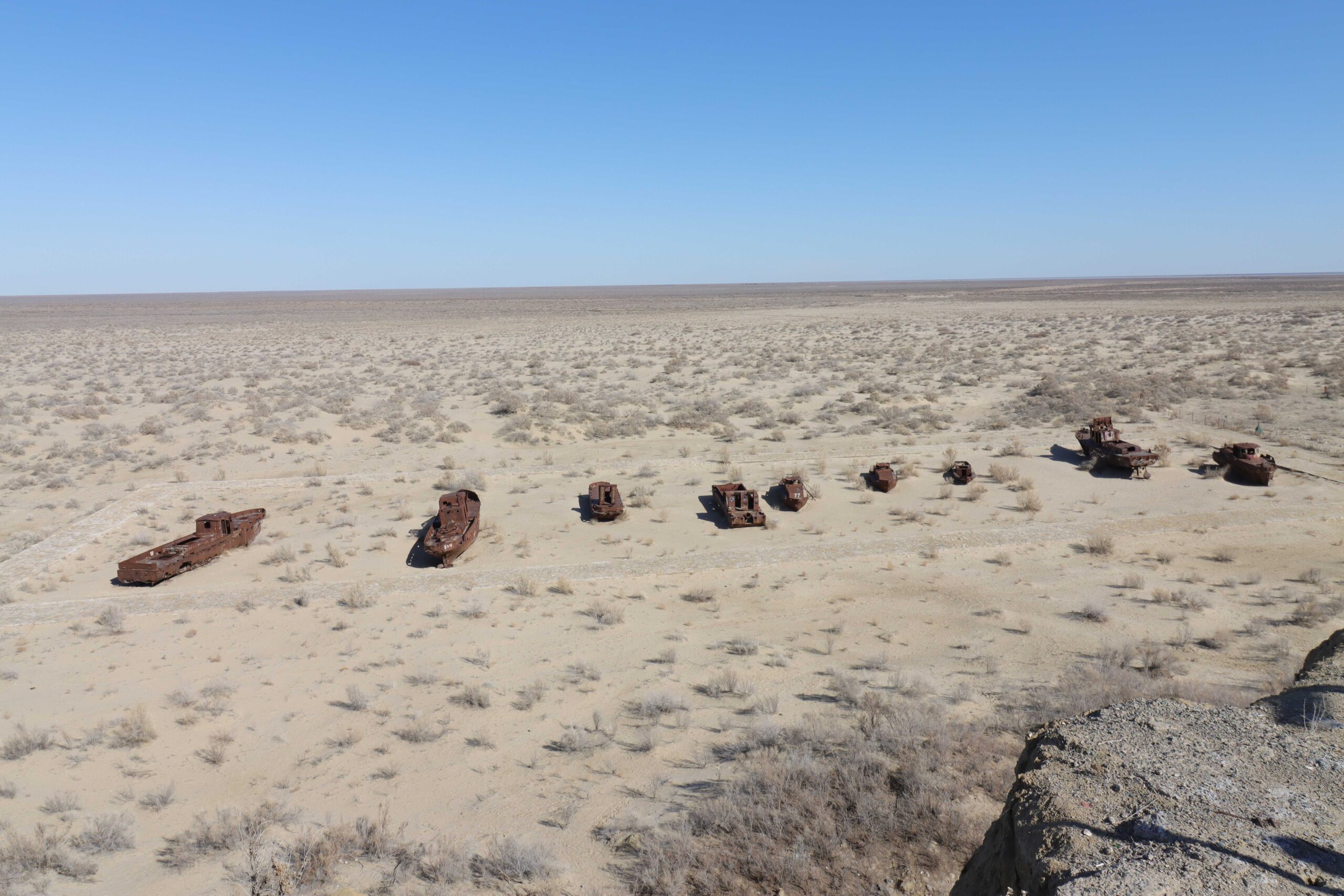
A detailed report on the task of ameliorating all this damage can be found in the World at Large environment and impact section.
Seeing it firsthand was quite something for many reasons. Tourism has many ugly faces; so-called ‘disaster tourism’ is not necessarily what I would call ugly, but it’s a strange feeling. I traveled there with three individuals I would staunchly hesitate to call tourists, as they were extremely experienced travelers and on long-term travel schedules. Nonetheless we all paid good money to roll across the desert in a 4×4 to spend just a few hours at the sight of this terrible Moscow-engineered catastrophe that saw thousands of babies stillborn, tens of thousands of citizens suffer from cancer, kidney disease, and blindness. Much of those health effects are gone, but not forgotten.
As soon as you exit the middle part of Uzbekistan, and the fields irrigated by the mighty Amu Darya river shimmer into view, one notices the salt. It rises and falls, but its presence is everywhere—even 24 hours by car from the seaside, there are banks of salt on many of the orchard plots around the city of Khiva. In the city of Nukus, far nearer to the Aral, the salt is mostly gone, but all the surrounding towns glitter white with it in the sun.
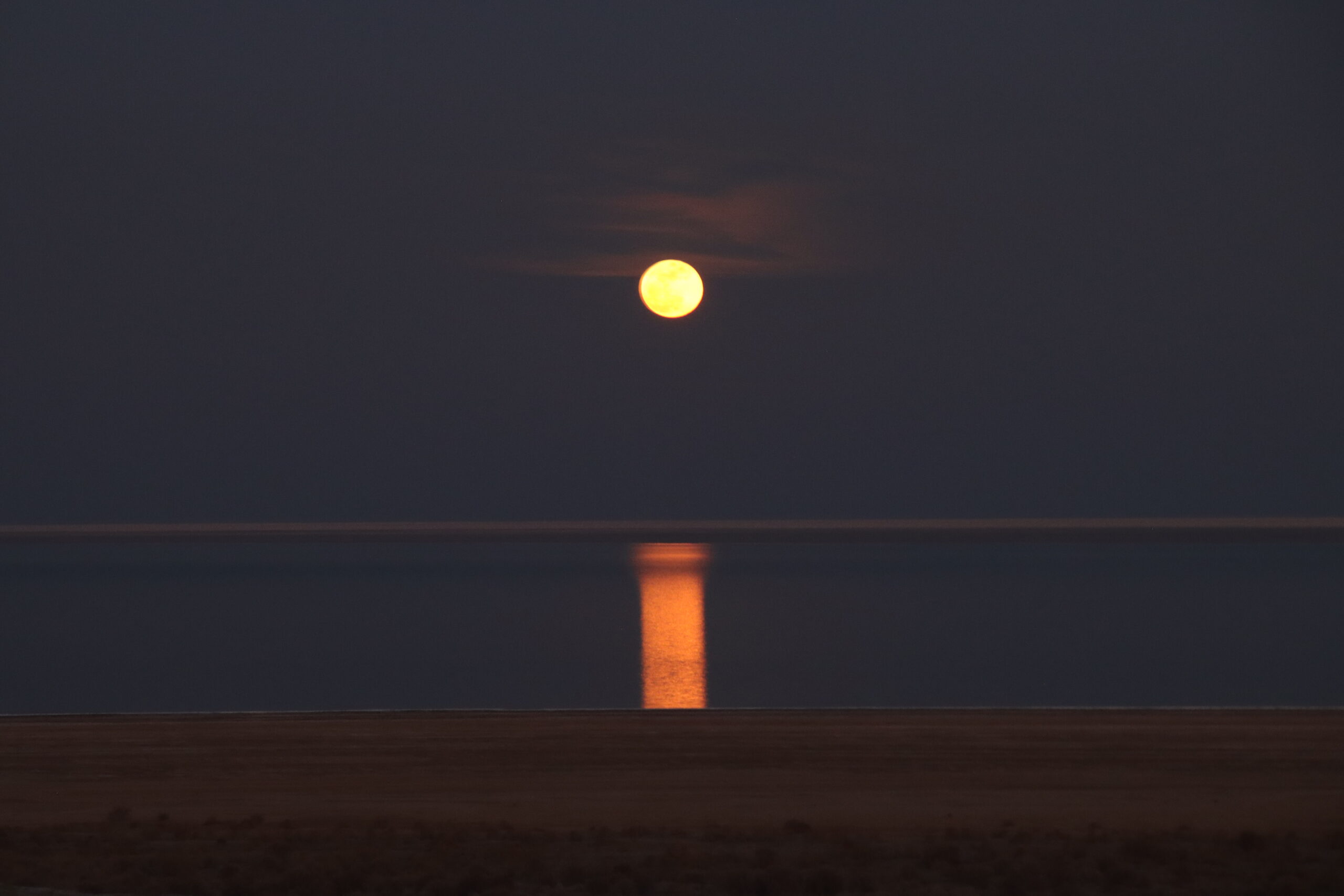
In the town of Moynaq, the largest community on the Aral Sea where tourists come to take pictures of the fishing fleet stranded in the desert hundreds of kilometers from the sea they used to navigate, a museum to the tragedy is slightly ham-handed in its beckoning of visitors through the doors. Inside are a smattering of artifacts that, in my humble opinion, fail slightly to impart any sense of history or place onto the visitor. Rusted cans from the once-thriving canery on the shore, small anchors and other ship components, taxidermied animals representing the previous ecosystem, and Impressionist paintings of life on the seaside when there was a seaside.
Outside, a tall shark fin-shaped memorial to the sea itself bears plaster sculptures of the Aral seen from space at 15-year intervals, as it shrank from 68,000 square kilometers to just 3,000. What it fails to add is that by 2006, the year the sculptures were finished, the sea had not finished shrinking. It continued until this very day.

It’s very hard getting to the sea. A labyrinth of off-road tracks with no road signs and no cell signal has to be navigated to get a four-wheel drive close enough before the ground turns to mud. Around these muddy flatlands, teams of Road Warrior-esque fishermen ride about on fat-wheel motorized quads and tricycles, harvesting the brine shrimp eggs and sleeping in military-style tents. Some of them waved at us, I could only offer a camera lens in return to my great discredit.
Recent scientific surveys actually show the local environment is getting worse, and to wit, our driver took us to a tall overlook of the lake called Sudochye near the sea’s remnant water body. He pointed out a drainage canal had already been dug into the lake and was siphoning off water to Turkmenistan. Local experts and non-experts alike told me that the region is set to be the world’s most water-stressed region per capita.
At one point, we stopped by a crumbling canning factory, founded in the early 20th century in a community of Russian Cossack exiles. Heaps of rubble lay about alongside extremely well-detailed tourist info plaques containing quotes from Russian and British travelers to the region in the 19th century. A wooden rowboat from modern times also lay abandoned, a harbinger perhaps of future tidings. WaL
